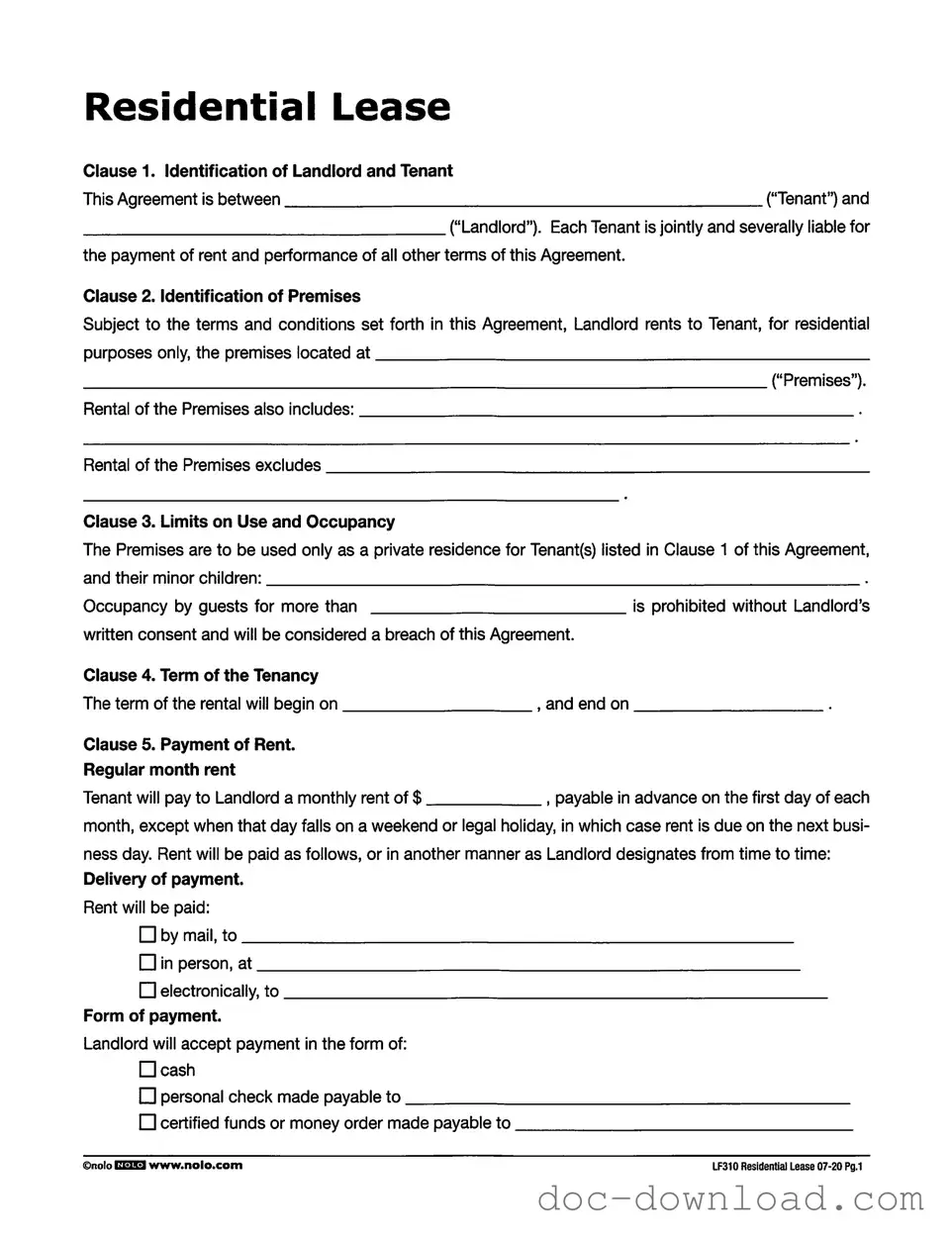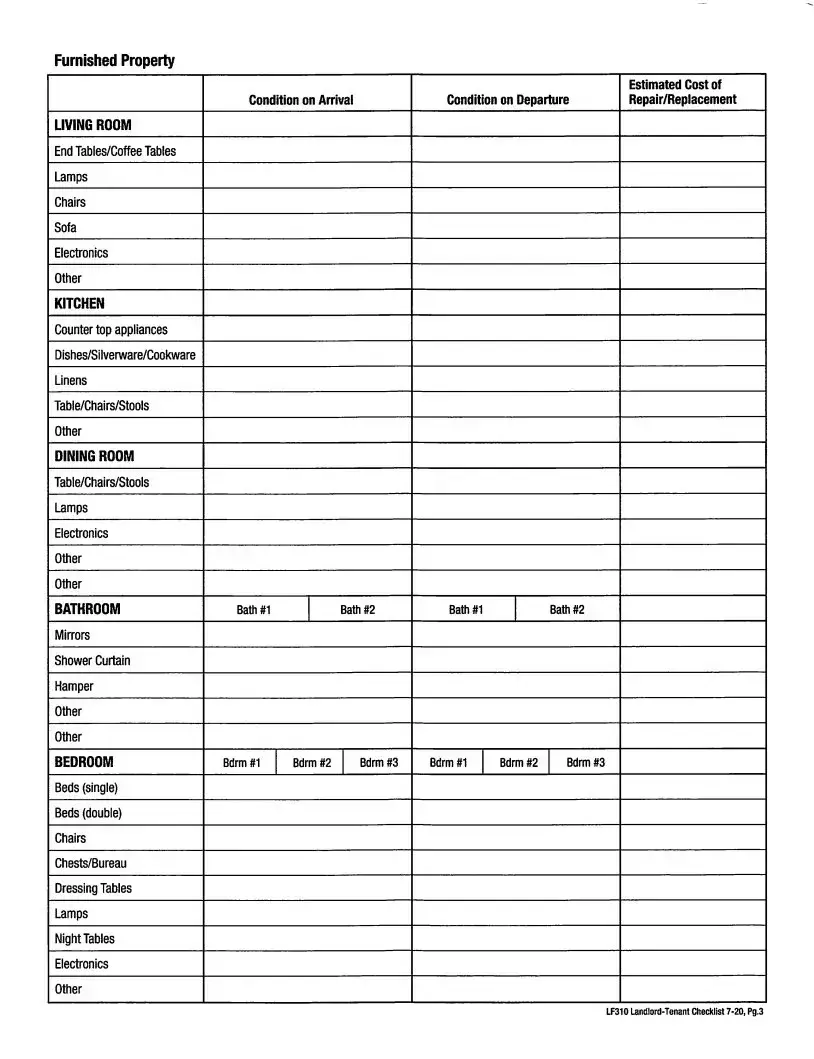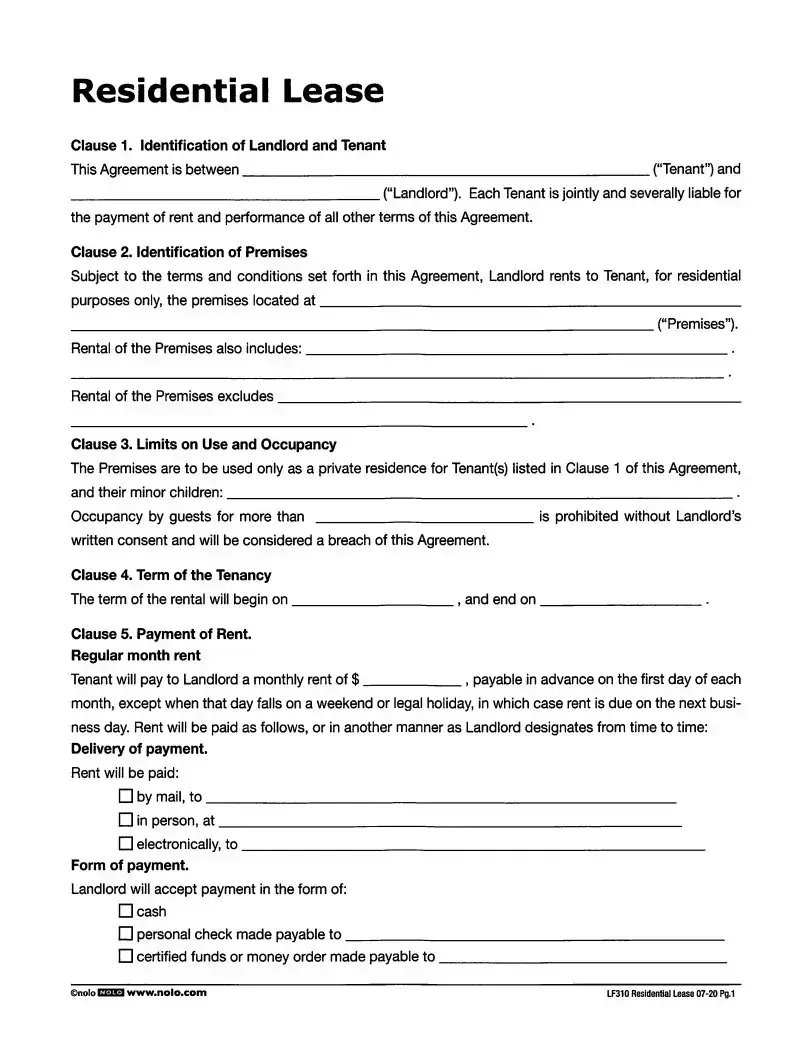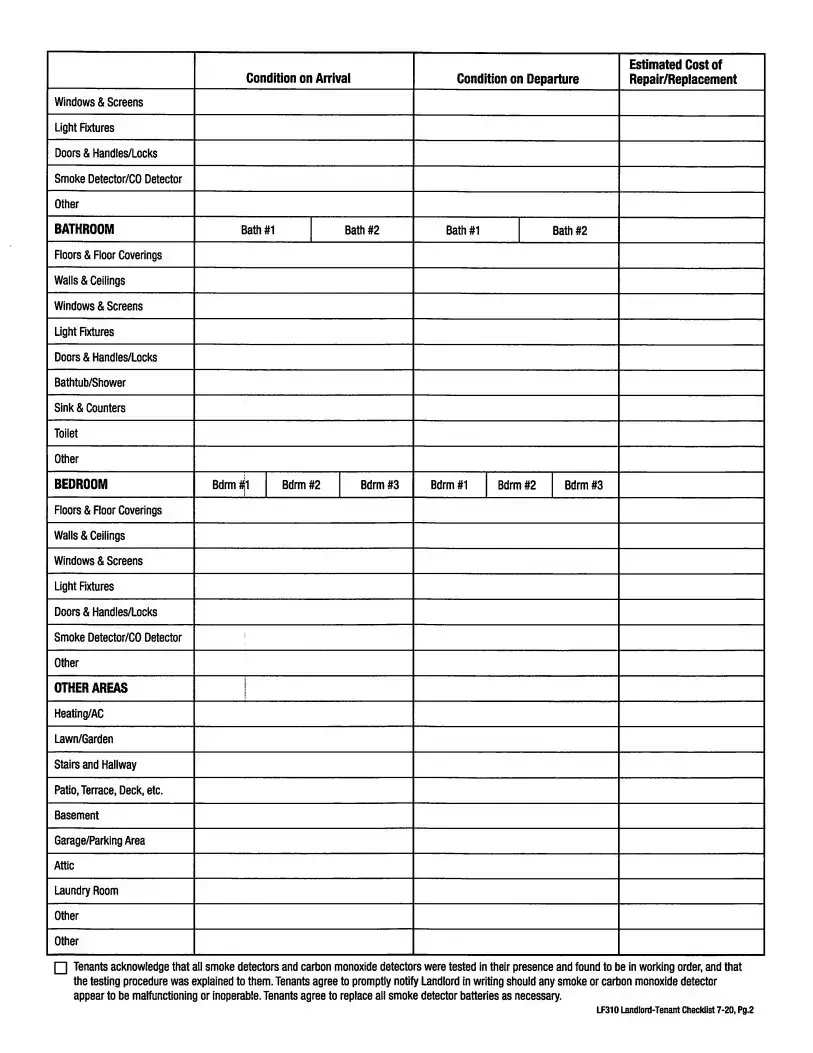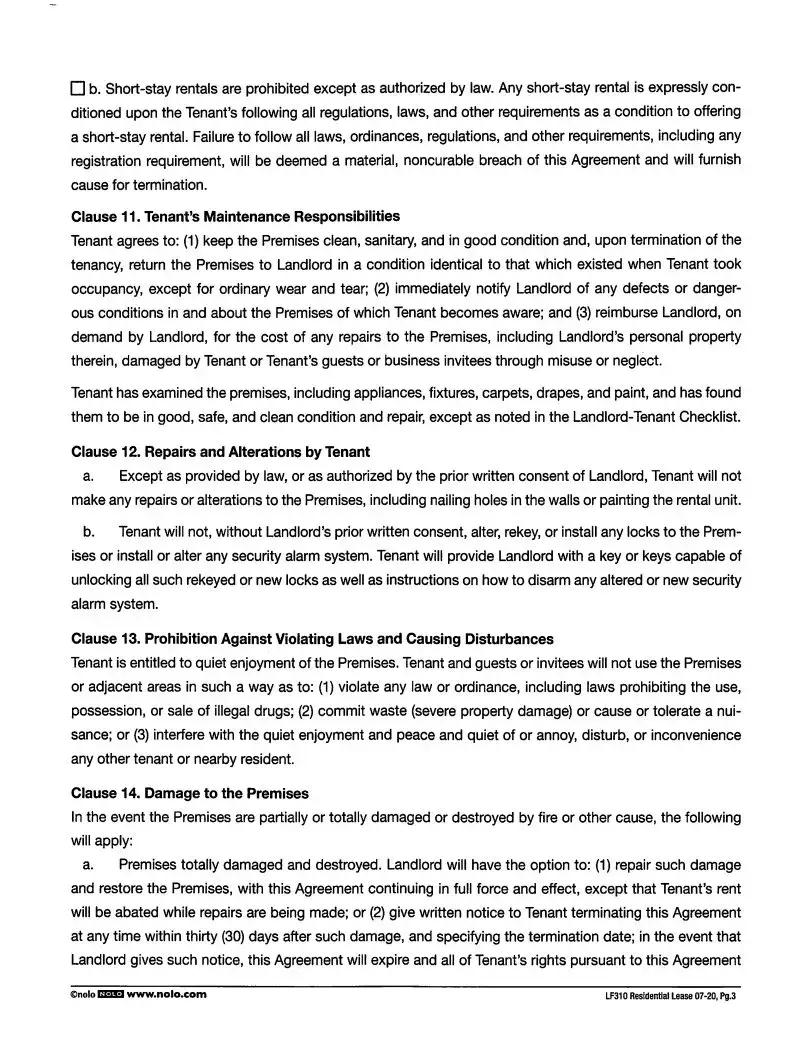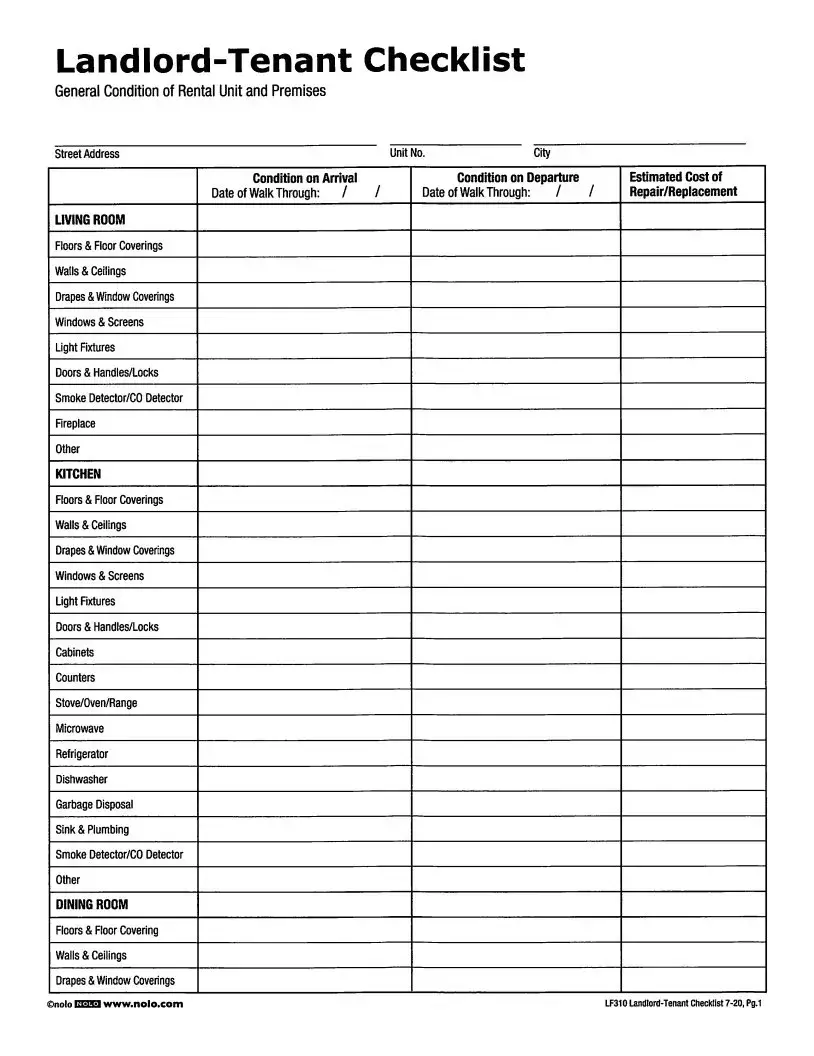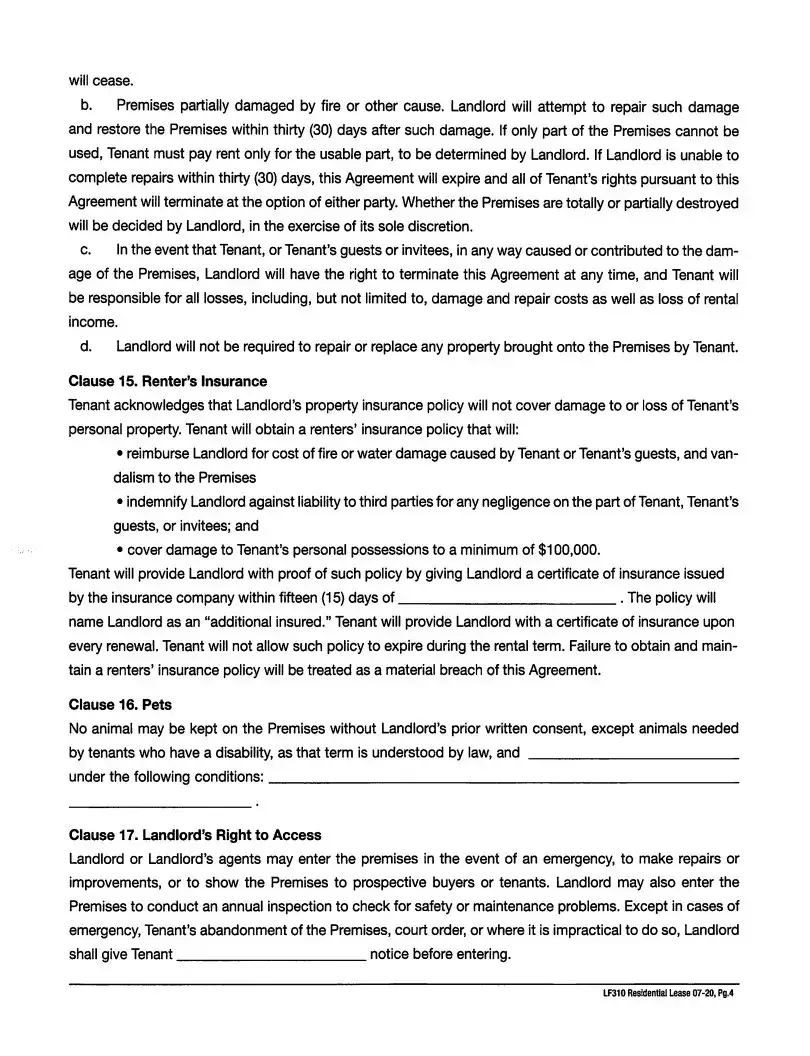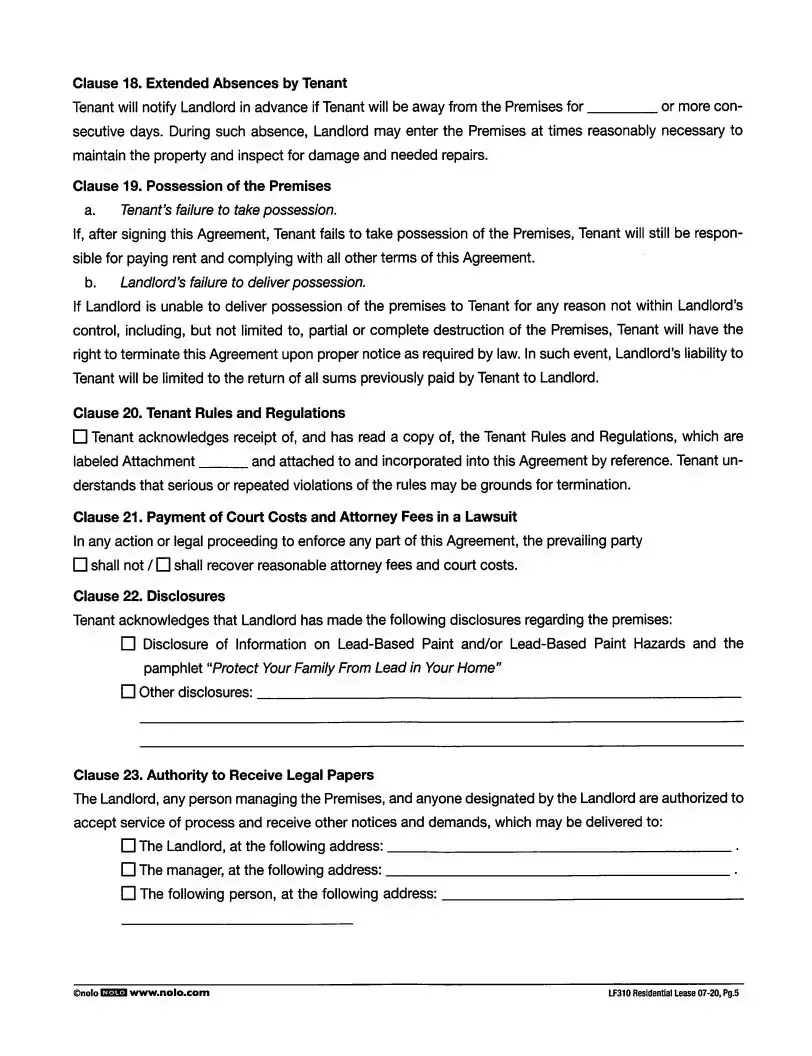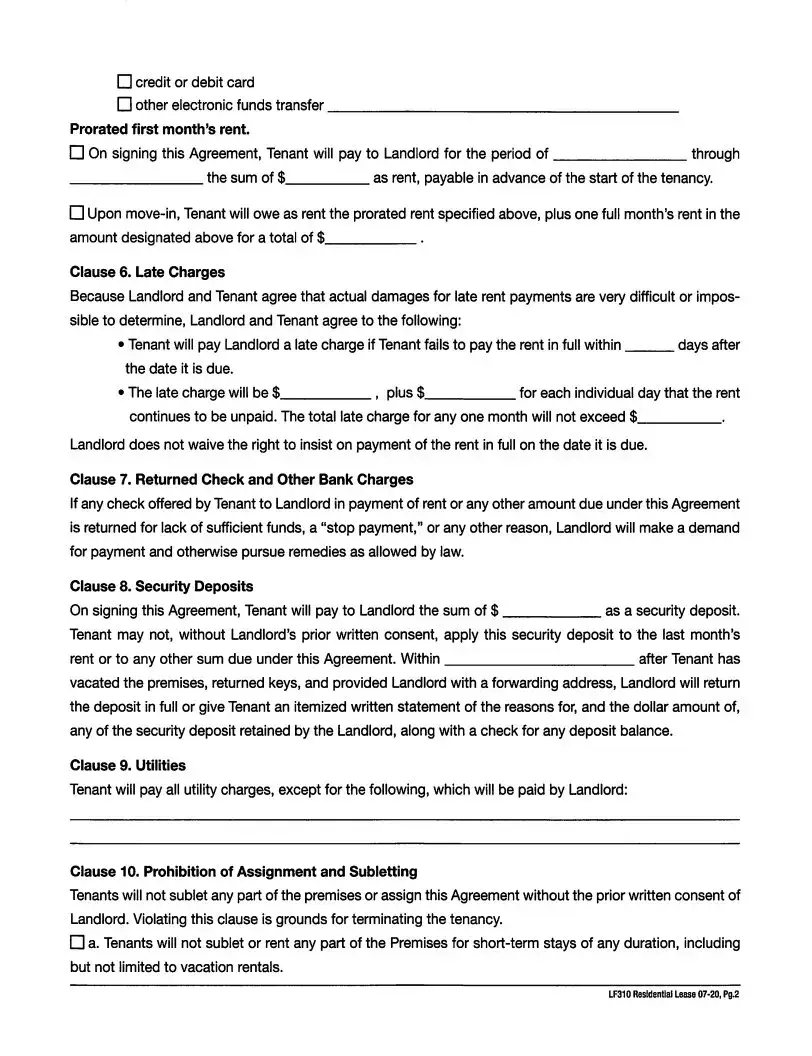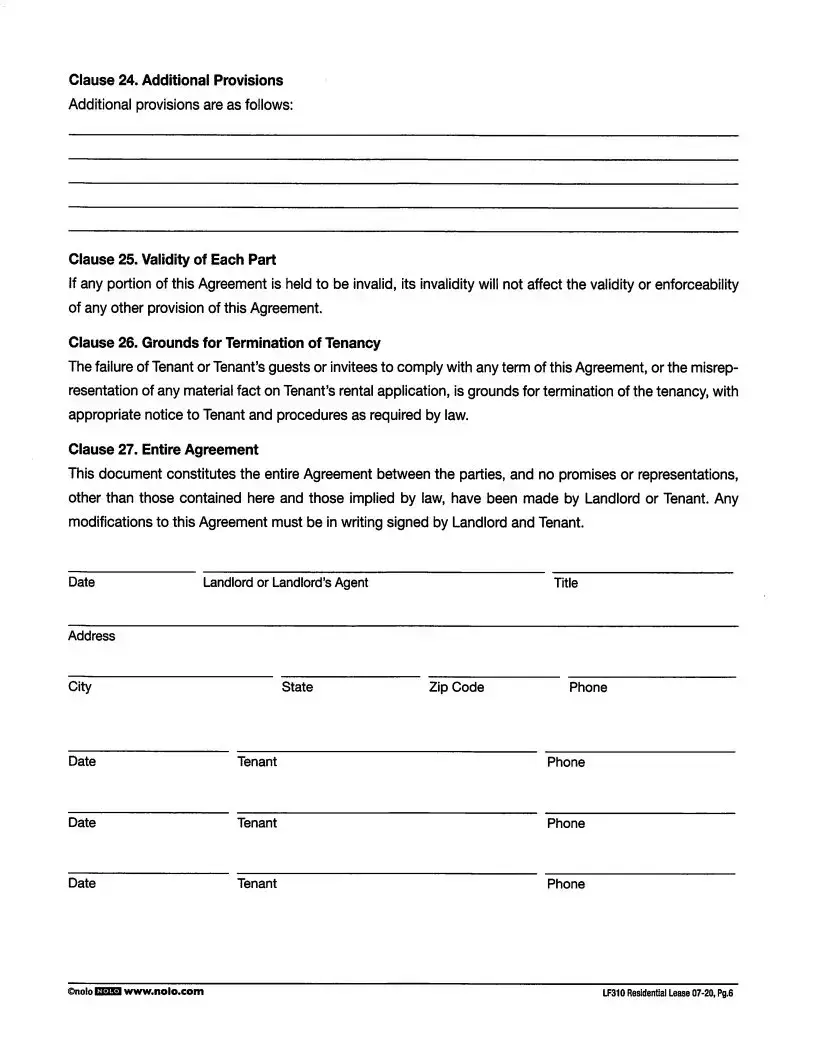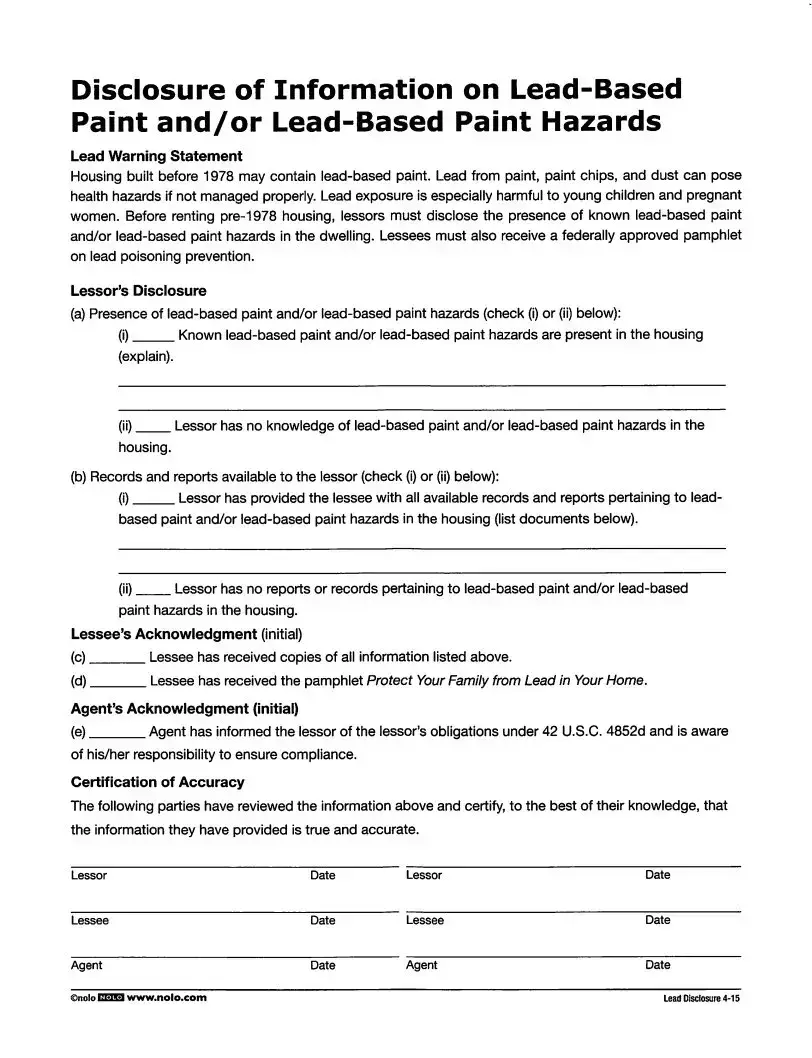The Lf310 Residential Lease form shares similarities with the standard Lease Agreement. Both documents outline the relationship between a landlord and a tenant, detailing the rights and responsibilities of each party. They typically include sections on payment terms, duration of the lease, and rules regarding the use of the property. Just like the Lf310 form, a standard Lease Agreement emphasizes the importance of clear communication regarding expectations, ensuring that both parties understand their obligations and the consequences of non-compliance.
Another document that resembles the Lf310 Residential Lease is the Rental Application. While the Rental Application primarily focuses on gathering information about potential tenants, it serves as a preliminary step in the leasing process. It often includes questions about employment, rental history, and references, much like the identification clauses in the Lf310 form. Both documents aim to establish a foundation for the landlord-tenant relationship, ensuring that the tenant is a suitable candidate for the rental property.
The Lease Addendum is another document closely related to the Lf310 form. This addendum provides additional terms that supplement the main lease agreement. For instance, it may address specific rules about pets, smoking, or maintenance responsibilities. Just as the Lf310 includes clauses that clarify the use of the premises and payment of rent, a Lease Addendum can offer further specificity, helping to prevent misunderstandings between landlords and tenants.
Similar to the Lf310 form, the Month-to-Month Rental Agreement provides a framework for rental terms but with more flexibility. This document allows either party to terminate the agreement with proper notice, rather than committing to a fixed lease term. Both agreements outline payment terms and responsibilities but differ in their duration and termination provisions, catering to tenants who may prefer a less permanent arrangement.
The Lease Termination Notice also bears resemblance to the Lf310 form. This document is used when either the landlord or tenant wishes to end the lease agreement. It outlines the necessary steps and timelines for termination, ensuring compliance with legal requirements. Just as the Lf310 form includes clauses about the duration of tenancy and conditions for termination, the Lease Termination Notice formalizes the process for concluding the rental relationship.
The Security Deposit Agreement is another document that aligns with the Lf310 Residential Lease. This agreement specifically addresses the terms surrounding the security deposit, including the amount, conditions for its return, and reasons for potential deductions. Like the Lf310 form, which details the handling of security deposits, this agreement ensures transparency and fairness in financial matters between landlords and tenants.
A Quitclaim Deed serves as a useful tool in various property transactions, particularly in Illinois, where it is essential to clear up title issues or to facilitate the transfer of property between family members. For those looking to access a convenient form to use for this purpose, you can find the necessary template at quitclaimdeedtemplate.com/illinois-quitclaim-deed-template/.
Finally, the Move-In/Move-Out Checklist is similar to the Lf310 form in that it provides a detailed record of the property's condition at the beginning and end of a tenancy. This checklist helps protect both parties by documenting any existing damages or issues. Just as the Lf310 form outlines tenant responsibilities, this checklist serves as a practical tool for ensuring that both landlords and tenants are held accountable for the property's condition throughout the rental period.
